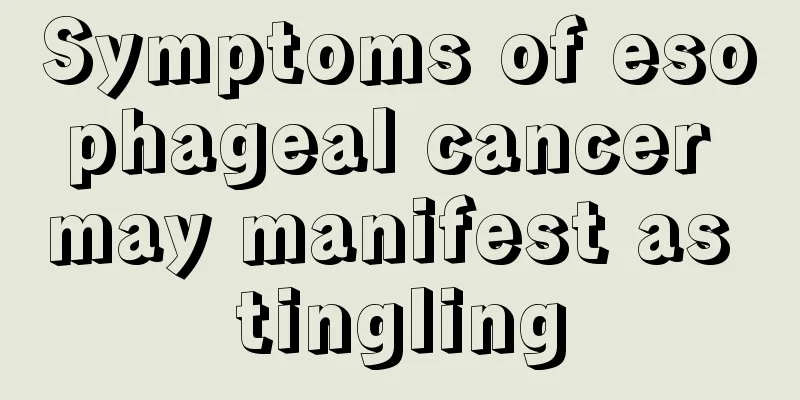What are the signs of nasopharyngeal cancer?

|
Any disease always has certain signs of onset, but some are more obvious and easily attract people's attention. So what are the signs of nasopharyngeal cancer? As time goes by, people are paying more and more attention to their physical health. According to relevant survey data, nasopharyngeal cancer has become one of the top ten killers threatening the health of Chinese residents. In addition, the early symptoms of nasopharyngeal cancer are very hidden and difficult to be discovered by people, which has caused a lot of misdiagnosis. The following is a brief introduction to the signs of nasopharyngeal cancer. Nosebleeds: There may be bleeding symptoms in the early stage, which are often manifested as blood in the sputum after suctioning the nose or blood in the mucus when blowing the nose, which is also called respiration blood in the sputum. The blood in the mucus of patients with nasopharyngeal carcinoma often occurs in the morning after getting up. When the amount of blood in the mucus is not large, it is often neglected by patients with nasopharyngeal carcinoma. It is a small amount of mucus blown out of one nostril, or with blood. Most patients retract the nasal cavity and suck out the bloody mucus from the oropharynx. This "pharyngeal" nosebleed causes missed diagnosis and misdiagnosis. In the early stage, there is only a small amount of blood in the sputum or mucus, which sometimes appears and sometimes does not. In the late stage, there is more bleeding and nose bleeding may occur. Neck pain: Refers to numbness of the facial skin, clinical examination shows decreased or absent pain and touch sensation. Tumor invasion of the cavernous sinus often causes damage to the first or second branch of the trigeminal nerve; tumor invasion of the oval foramen, the anterior area of the styloid process, and the third branch of the trigeminal nerve often causes numbness or paresthesia of the skin in the front of the auricle, temporal region, cheek, lower lip, and chin. Facial skin numbness accounts for 10% to 27%. Nasal congestion: The symptoms of nasal congestion are often overlooked. About 12.5% of patients have nasal congestion as the initial symptom, and 42% of patients have nasal congestion symptoms when diagnosed. Therefore, this is also an early symptom of nasopharyngeal cancer. Nasal congestion may occur when the tumor blocks the posterior nostrils. When the tumor is small, the nasal congestion is mild. As the tumor grows, the nasal congestion worsens, mostly unilateral. If the tumor blocks both posterior nostrils, bilateral nasal congestion may occur. Mild, as the tumor grows, the nasal congestion worsens, mostly unilateral. If the tumor blocks both posterior nostrils, bilateral nasal congestion may occur. The early symptoms of nasopharyngeal cancer do not appear alone. Many patients have multiple symptoms. However, since they are minor symptoms and do not cause severe discomfort, many patients ignore these early symptoms. We must carefully observe our physical condition to achieve early detection, early diagnosis, and early treatment. Swollen lymph nodes in the neck: It may also be an early symptom of nasopharyngeal cancer. Because the internal structure of the nose is complex, and the lymphatic vessels in the nose are like small paths leading to the outside world, the cancer cells of nasopharyngeal cancer are in the neck near the back of the earlobe, forming swollen lymph nodes in the neck. Many nasopharyngeal cancer patients often seek medical treatment by accidentally discovering a "lump" on their neck. This "lump" is actually an enlarged lymph node. Swollen lymph nodes in the neck of patients with nasopharyngeal cancer are often misdiagnosed as inflammation. For neck lumps that do not shrink after anti-inflammatory treatment, or even continue to grow rapidly, especially those with a hard texture, poor mobility, and multiple painless neck lumps that are fused into a mass, you need to see a doctor in time. Double vision: Because the tumor invades the abducens nerve, it often causes double vision when looking outward. Like other symptoms, diplopia of nasopharyngeal carcinoma is often unilateral. At the beginning, the nerve is compressed, the symptoms only occur occasionally, and the eyeball only moves unsmoothly. Timely treatment can recover; but as the disease progresses, when nerve damage occurs, recovery after treatment becomes difficult. Trochlear nerve invasion often causes inward strabismus and diplopia, and diplopia accounts for 6.2%. It is often damaged at the same time as the trigeminal nerve. Hearing loss, tinnitus: Tinnitus, a stuffy feeling in the ears, and hearing loss are also early signs of nasopharyngeal carcinoma. More than 65% of nasopharyngeal carcinoma patients are found to have tinnitus symptoms. The sound in the ears of tinnitus patients varies from person to person. Some sound like cicadas and insects, while others sound like wind and machine roars, etc., with varying degrees of severity. This is a relatively obvious early symptom of nasopharyngeal carcinoma. This symptom is caused by the nasopharyngeal neoplasm blocking the pharyngeal opening of the Eustachian tube on the affected side. Tinnitus and hearing loss are often misdiagnosed as otitis media or other diseases, which delays treatment. Unilateral tinnitus or hearing loss and a feeling of blockage in the ear are one of the early symptoms of nasopharyngeal carcinoma. Headache; It is a common symptom, accounting for 68.6%. It can be the first symptom or the only symptom. Headache is one of the more common symptoms of nasopharyngeal carcinoma. Patients often do not complain about nasal pain first, but first complain of headache, or swelling and pain, or distending pain, or dull pain, which often reflexively cause forehead, temporal, occipital or whole head pain. In the early stage, the location of headache is not fixed and intermittent, while in the late stage, it is continuous migraine with a fixed location. The symptoms of headache in patients with nasopharyngeal carcinoma are often misdiagnosed as other brain diseases, which need to attract everyone's attention. What are the signs of nasopharyngeal cancer? After the above introduction, I believe everyone has a certain understanding. The early symptoms of nasopharyngeal cancer are very important to us. Many times, for some diseases, the early symptoms are often ignored by us, causing serious harm. Therefore, we must not ignore the related symptoms of some diseases and pay attention to them. Only in this way can the disease be controlled within a certain range. |
<<: Introduction to the hazards of laryngeal cancer
>>: Which sports are suitable for patients with nasopharyngeal cancer
Recommend
What is the best way to treat tracheitis cough?
We all know that bronchitis is a relatively stubb...
What should you do if your stomach is indigestion? Have you done this?
Under the long-term influence of bad eating habit...
There is a lump in the thigh
If a lump appears in the thigh, you must go to th...
Cooking porridge in a rice cooker
How about cooking porridge in a rice cooker? This...
What disease does nosebleed indicate and what are the causes?
It can be said that most people have experienced ...
Difference between nasal concha hypertrophy and nasal polyps
Turbinate hypertrophy and nasal polyps are both v...
What are the methods to prevent teratoma
The location of teratoma varies, and there are ma...
What causes cold stomach pain?
From the perspective of traditional Chinese medic...
How to treat alcohol withdrawal syndrome
Some friends who drink alcohol for a long time ma...
Facial skin problems
Many people tend to ignore skin problems, but in ...
This is how you should handle a positive Mycoplasma pneumoniae antibody
Pneumonia is an extremely serious disease for chi...
Male breast cancer mortality rate is higher than female
At present, breast cancer prevention and breast c...
What should I do if my stomach cancer vomit is dark brown?
What should I do if my vomit from stomach cancer ...
What is the difference between cod liver oil and d3
We all know that cod liver oil can supplement cal...
Squamous metaplasia and treatment methods
Many people around us suffer from a disease calle...









